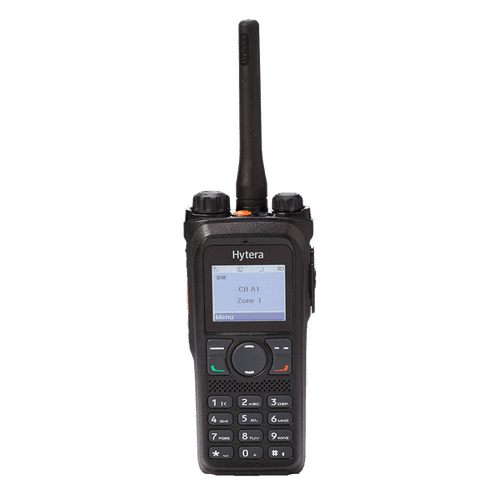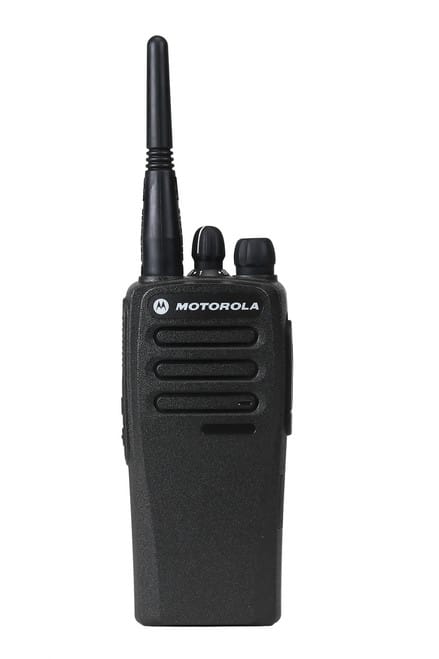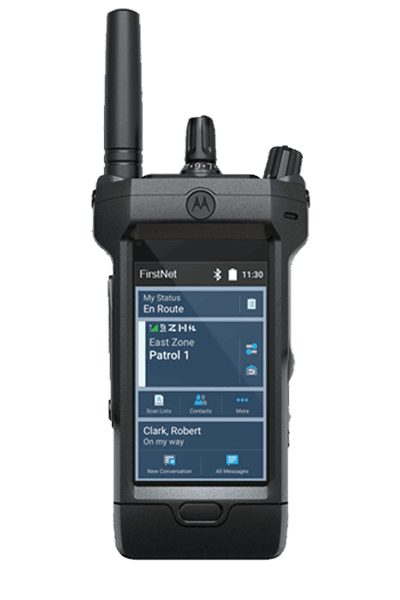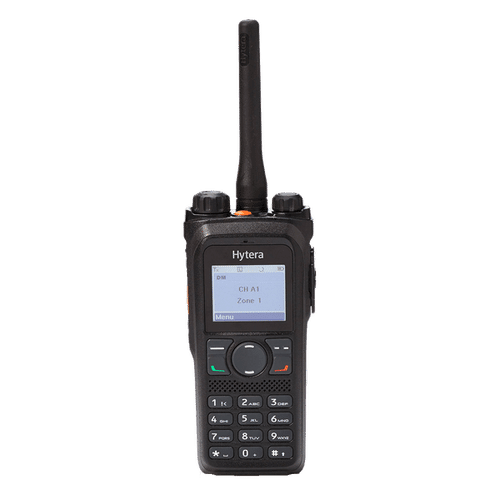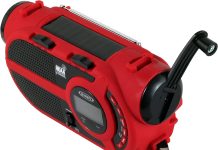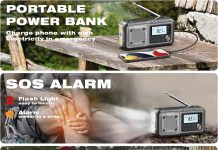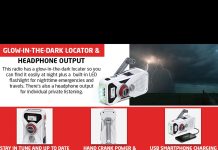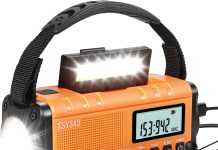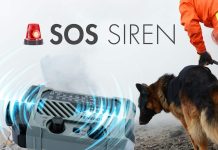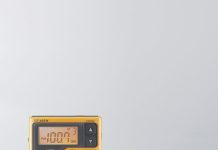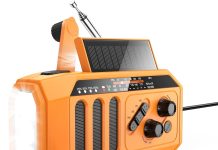Have you ever wondered what kind of radio first responders use in emergencies? In high-stress situations, precise and reliable communication is crucial for ensuring the safety of both responders and the public.
First responders rely on specialized radios to withstand harsh conditions and provide instant, secure communication to handle emergencies effectively.
These radios, known as two-way radios or walkie-talkies, are compact yet powerful devices that enable seamless communication between responders, enabling them to coordinate their efforts and respond efficiently to emergencies.
Review contents
Conventional Radios
Conventional radios are popular for first responders and other professionals who require reliable communication. These radios operate on different frequency bands, such as Very High Frequency (VHF) and Ultra High Frequency (UHF), each with advantages.
VHF Radios
VHF radios are widely used in various industries, including public safety. With a longer wavelength, they can cover larger geographic areas and penetrate obstacles better than UHF radios. This makes them ideal for rural areas or locations with many obstructions, such as buildings or dense foliage. VHF radios are known for their long-range communication capabilities but may be more susceptible to interference in densely populated urban areas.
UHF Radios
On the other hand, UHF radios operate on a higher frequency and shorter wavelength than VHF radios. This allows them to penetrate buildings and other obstacles more effectively, making them popular in urban environments. UHF radios are also less susceptible to interference caused by atmospheric conditions. First responders commonly use these radios in densely populated areas with essential coverage and clarity.
Single-Band Radios
Single-band radios operate on a single frequency band, either VHF or UHF. They are reliable and straightforward, providing users with dependable communication within their chosen frequency range. Single-band radios are cost-effective options for individuals or organizations with specific communication needs.
Dual-Band Radios
Dual-band radios offer the convenience of operating on both VHF and UHF frequencies. This versatility allows users to switch to the most suitable frequency band based on location or communication requirements. Dual-band radios are popular among first responders who need seamless communication in different environments, whether in rural areas or densely populated urban centers.
Trunked Radios
Trunked radios provide advanced communication capabilities and are often used by public safety agencies and organizations with large fleets. These radios operate on trunked systems, which are designed to efficiently manage a large number of users and provide enhanced features.
P25 Radios
Project 25 (P25) radios are designed for interoperability and compatibility across manufacturers and agencies. Using standardized protocols, P25 radios provide reliable digital communication, ensuring seamless collaboration between first responders from different departments or jurisdictions. These radios support features such as encryption, advanced audio quality, and data transmission, enhancing the overall effectiveness of emergency response operations.
NXDN Radios
NXDN radios use narrowband technology to optimize spectrum efficiency and improve signal clarity. These radios comply with the Association of Public-Safety Communications Officials (APCO) International’s P25 Phase 1 and P25 Phase 2 standards. NXDN radios are often used by public safety agencies that prioritize secure, reliable, and interoperable communication.
DMR Radios
Digital Mobile Radio (DMR) radios offer efficient communication for many professional applications. DMR radios use Time Division Multiple Access (TDMA) technology, allowing simultaneous communication on a single frequency. This technology effectively doubles the capacity of the available spectrum, making it suitable for organizations with high communication demands. DMR radios provide features such as private and group calls, text messaging, and enhanced voice clarity.
TETRA Radios
Terrestrial Trunked Radio (TETRA) radios are widely used by public safety agencies, transportation companies, and other organizations requiring reliable and secure communication. TETRA radios provide efficient and secure communication, offering features such as encryption, prioritized calls, and location services. These radios operate on a separate dedicated frequency, ensuring interference-free communication even in congested areas.
Public Safety Broadband
As technology evolves, public safety agencies increasingly rely on broadband networks for communication. Public Safety Long Term Evolution (LTE) radios and the implementation of the FirstNet Network are two significant advancements in the public safety broadband domain.
LTE Radios
LTE radios leverage the power of broadband networks to provide high-speed data, video, and voice communication. These radios offer enhanced capabilities like real-time video streaming, data sharing, and access to advanced applications. LTE radios enable first responders to quickly gather and transmit critical information, improving emergency situational awareness and decision-making.
FirstNet Network
The FirstNet Network is a nationwide broadband network dedicated to public safety. It provides a reliable and secure communication platform for first responders, ensuring priority access to critical information and resources. FirstNet offers a range of devices, including smartphones, tablets, and specialized LTE radios, that support real-time data transmission, video streaming, and collaboration among public safety agencies.
Specialized Radios
Specialized radios cater to specific requirements and industries, offering advanced features and functionalities for specialized applications.
APCO Project 25 Radios
APCO Project 25 (APCO P25) radios are designed to meet the evolving needs of public safety professionals. These radios support interoperability between different manufacturers and provide reliable communication in challenging environments. APCO P25 radios offer encryption, advanced audio quality, and seamless integration with existing communications systems.
MOTOTRBO Radios
MOTOTRBO radios combine the benefits of analog and digital communication, offering enhanced voice clarity and expanded coverage. These radios support digital features such as private and group calls, text messaging, and GPS tracking. MOTOTRBO radios are widely used in transportation, manufacturing, and public safety industries, providing reliable and efficient communication for day-to-day operations and emergencies.
Simulcast Systems
Simulcast systems enable the simultaneous transmission of the same message on multiple radio towers or base stations. This technology ensures that users receive the message with equal strength and clarity, regardless of their location within the coverage area. Reliable and widespread communication is crucial when Simulcast systems are commonly used in public safety applications.
Digital Encryption Radios
Digital encryption radios provide secure communication by encrypting voice and data transmissions. These radios ensure that sensitive information remains confidential and protected from unauthorized access. Digital encryption radios are widely used in law enforcement, military, and other industries that require secure communication.
In-Building Communication
In-building communication systems are essential for maintaining communication coverage and clarity within structures such as buildings, tunnels, and underground facilities. These systems address the challenges of limited signal penetration and potential dead zones.
Bi-Directional Amplifiers (BDAs)
Bi-directional amplifiers (BDAs) enhance signal strength and coverage inside buildings. BDAs receive weak signals from outside the building, amplify them, and distribute them to the desired areas. BDAs are commonly used in commercial buildings, hospitals, and other structures where reliable communication coverage is vital.
Distributed Antenna Systems (DAS)
Distributed Antenna Systems (DAS) consist of a network of antennas placed strategically throughout a building to distribute and boost signals. DAS ensures uniform signal strength and coverage in different building areas, including stairwells, elevators, and underground sections. DAS is an effective solution for large buildings or complexes with challenging signal propagation.
Wireless Mesh Networks
Wireless Mesh Networks (WMNs) use interconnected wireless devices to extend signal coverage within a limited area. Each device in the network functions as a relay, forwarding signals to other devices. WMNs are particularly useful in challenging environments such as disaster zones, where infrastructure may be damaged or nonexistent. These networks provide flexible and resilient communication solutions for first responders under challenging conditions.
Portable Radios
Portable radios, also known as handheld radios, are essential tools for first responders, offering mobility, convenience, and reliable communication in the field.
Compact Handheld Radios
Compact handheld radios are lightweight and designed for ease of use and portability. These radios suit various professional applications, including public safety, security, and event management. Compact handheld radios offer features such as clear audio transmission, extended battery life, and durable construction to withstand harsh environments.
Submersible Radios
Submersible radios are designed to withstand water immersion and are ideal for water-related operations. These radios have a robust construction that meets IPX7 or IPX8 standards, ensuring their ability to function even when submerged in water for a specific period. Submersible radios are widely used by first responders involved in water rescues, diving operations, and marine activities.
Intrinsically Safe Radios
Intrinsically safe radios are engineered to prevent the ignition of potentially explosive gases or substances in hazardous environments. These radios comply with stringent safety standards and certifications, making them safe to use in potentially explosive atmospheres. Intrinsically safe radios are used in oil and gas, mining, and chemical processing industries.
Mobile Radios
Mobile radios are installed in vehicles and provide reliable communication while on the move. First responders commonly use these radios, requiring continuous communication and enhanced vehicle coverage.
Vehicle-Mounted Radios
Vehicle-mounted radios are rugged and designed to withstand the demands of mobile environments. These radios are typically mounted in emergency response vehicles, public safety vehicles, or any vehicle that requires continuous communication. Vehicle-mounted radios offer powerful transmitters, extended range capabilities, and advanced features such as GPS tracking and remote control head capabilities.
Motorcycle Radios
Motorcycle radios are specially designed for law enforcement officers, security personnel, and other professionals who require communication while riding motorcycles. These radios provide clear audio transmission and have weatherproofing, high impact resistance, and helmet microphone integration, ensuring seamless communication even in challenging riding conditions.
Marine Radios
Marine radios are designed for waterway communication, making them essential for marine first responders, boaters, and maritime professionals. These radios operate on frequencies designated for marine use, allowing communication between vessels, marinas, and coast guards. Marine radios offer features such as weather alerts, GPS tracking, and emergency distress calls, enhancing safety and communication on the water.
Interoperability
Interoperability is a critical aspect of communication for first responders, enabling seamless collaboration between different agencies, jurisdictions, and departments during emergencies.
APX Radio Management
APX Radio Management is a comprehensive system that simplifies radio management for public safety agencies. This system allows agencies to efficiently manage their radio fleet, including programming, updating, and monitoring radios. It ensures that all radios are current and compliant with the latest standards, promoting interoperability and facilitating efficient communication during emergency response operations.
P25 Inter-RF Subsystem Interface (ISSI)
The P25 Inter-RF Subsystem Interface (ISSI) is a standardized interface that allows different P25 systems from different manufacturers to interoperate seamlessly. By implementing ISSI, public safety agencies can bridge communication gaps and achieve interoperability between their existing communication systems. ISSI enables secure and reliable agency communication during multi-agency operations and large-scale emergencies.
Console Subsystem Interface (CSSI)
The Console Subsystem Interface (CSSI) is a standardized interface that connects dispatch consoles, allowing operators to control and communicate with radios from different manufacturers. CSSI enables dispatchers to have real-time access to radios from various agencies, enhancing situational awareness and facilitating coordinated response efforts. With CSSI, dispatchers can seamlessly communicate with first responders using different radio systems, promoting interoperability and efficient communication.
Radio over IP (RoIP)
Radio over IP (RoIP) technology enables the integration of radio systems with IP-based networks, such as local area networks (LANs) or wide area networks (WANs). RoIP allows seamless communication between radios and various devices, including smartphones, tablets, and computers. This integration extends communication capabilities beyond traditional radio systems, promoting interoperability and expanding communication options for first responders.
Radio Accessories
Radio accessories enhance the functionality and convenience of radios, providing users with additional features and customization options.
Speaker Microphones
Speaker microphones, known as remote speaker microphones (RSMs) or shoulder microphones, allow users to communicate hands-free while maintaining clear audio transmission. These accessories typically attach to the user’s shoulder or lapel and have a built-in microphone and speaker. Speaker microphones are particularly useful in noisy environments and situations where hands-free communication is necessary.
Headsets
Headsets offer hands-free communication while providing privacy and noise reduction. These accessories typically consist of a headphone or earpiece and a boom microphone. Headsets may be wired or wireless, allowing users to maintain clear and private communication while keeping their hands free for other tasks. Headsets like SWAT teams or tactical units are popular among first responders who require discreet and efficient communication.
Chargers
Chargers are essential accessories for keeping radios powered and ready for use. Various types of chargers are available, including desktop, multi-unit, and vehicle chargers. Chargers may support rapid charging or have additional features like battery conditioning or temperature monitoring. Having reliable and efficient chargers ensures radios are always ready for immediate use during critical situations.
Batteries
High-quality batteries ensure the reliable and long-lasting operation of radios. Depending on the model and requirements, batteries may be available in different capacities and chemistries, such as nickel-cadmium (NiCd), nickel-metal hydride (NiMH), or lithium-ion (Li-ion). Choosing suitable batteries for radios is crucial, as they directly impact the overall performance and longevity of the devices.
Antennas
Antennas are vital in radio communication as they transmit and receive signals. Different antennas, such as whip antennas, stubby antennas, or high-gain antennas can be used depending on the desired coverage and operating frequency. Selecting the appropriate antennas for specific applications ensures optimal signal range and clarity, maximizing communication effectiveness in various environments.
Future Trends in Radio Technology
Radio technology continues to evolve, with new advancements and trends shaping the future of communication for first responders.
Software-Defined Radios (SDRs)
Software-defined radios (SDRs) represent a shift towards flexible and adaptable radio systems. SDRs use software to control and configure radio functions, allowing for easier upgrades, advanced features, and improved interoperability. SDR technology enables first responders to adapt to changing communication needs, supporting emerging standards and future advancements in radio technology.
Push-to-Talk over Cellular (PoC)
Push-to-talk over Cellular (PoC) leverages cellular networks for instant and reliable communication. Using dedicated push-to-talk applications, PoC technology allows users to transmit voice, data, and multimedia messages over cellular networks. PoC offers comprehensive network coverage, rapid deployment, and the ability to communicate with traditional radios and PoC-enabled devices, making it an attractive solution for first responders.
Integration with Other Technologies
Radio technology is increasingly integrated with other technologies like Internet of Things (IoT) devices, sensors, and data analytics systems. This integration allows for enhanced situational awareness, real-time data sharing, and automation of critical processes. By leveraging interconnected technologies, first responders can access vital information, improve decision-making, and respond effectively to emergencies.
Enhanced Coverage and Reliability
Advancements in antenna technology, signal processing, and network infrastructure are continually improving coverage and reliability in radio communication. From advancements in antenna designs to deploying advanced 5G networks, first responders can expect enhanced coverage and signal quality, enabling more secure and effective communication, even in challenging environments.
As first responders prioritize communication as a critical component of their operations, advancements in radio technology will play a crucial role in enhancing their effectiveness and safety. With a wide range of radio options, first responders can choose the most suitable radios and accessories to meet their specific communication needs. This ensures reliable and efficient communication when it matters most.

